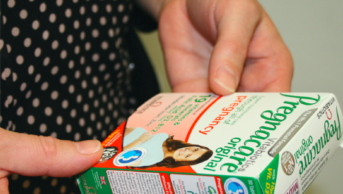This content was published in 2012. We do not recommend that you take any clinical decisions based on this information without first ensuring you have checked the latest guidance.

A. This may be a condition known as onychographosis, where typically the toenail becomes thickened and grows at an angle. The nail can become discolored and, in some cases, hypertrophy can cause the nails to grow in a claw-like shape.
Injury (eg, dropping an object onto the toe or years of impact against the toe box of a shoe) can damage growth cells, causing the nail to thicken. Typically the big toe is affected but ill-fitting shoes can cause onychogryphosis in several nails. The condition becomes more common with age.
Management depends on the severity of the condition and whether the nail is causing pain or difficulty with wearing shoes. If the condition is caused by repetitive micro-trauma avoiding pressure can sometimes improve the condition but onychogryphosis is rarely cured. The affected nail can be cut so that it is more manageable.
Products containing urea or salicylic acid are available to soften the nail for cutting but I would advise against using any chemical keratolytic unless under supervision of a podiatrist. It is much better to file the nail on a regular basis to keep it manageable. However, filing the nail thinner is also probably best left to a podiatrist because the inadvertent damage this might cause to the soft tissue under the nail can lead to infection. A podiatrist will grind the nail at frequent intervals.
In some cases, trauma to the nail is permanent and the nail may require removal under local analgesia. In such cases the nail root matrix will need to be destroyed because damaged growth cells will continue to produce a thick new toenail. This can be done surgically by podiatrists who often apply a saturated solution of phenol after the nail is removed to prevent it regrowing.
When to refer
The pharmacist should bear in mind that fungal infections and psoriasis can also lead to thickening of the nail. Even if the patient were in the pharmacy and the nail could be seen a culture would be needed to confirm a fungal infection. If keeping the nail cut and avoiding any trauma does not improve the condition, referral to a GP is recommended to rule out fungal infection.
As with any foot complaint, people with diabetes should always be referred. It is possible for a thickened nail to lacerate the nail bed, leaving the patient at risk of infection. Patients with conditions involving loss of sensation in their feet — particularly those with nails that are difficult to cut — are best having their nails cut by a podiatrist.
You might also be interested in…
How to select the right mouthwash

Thalassaemia and iron supplements
